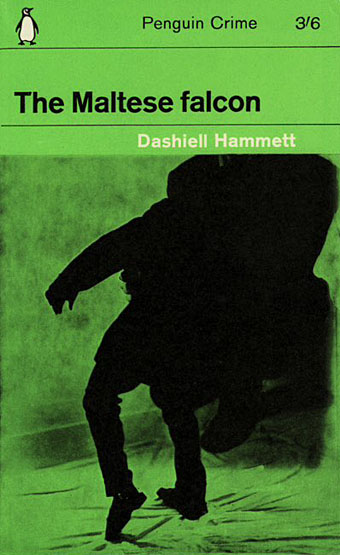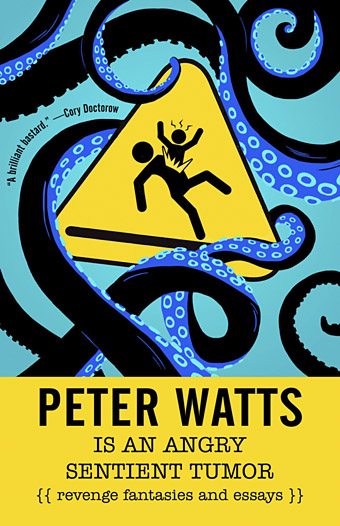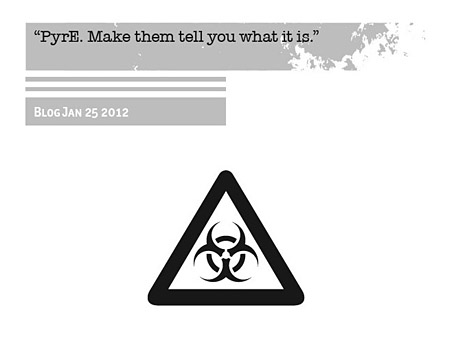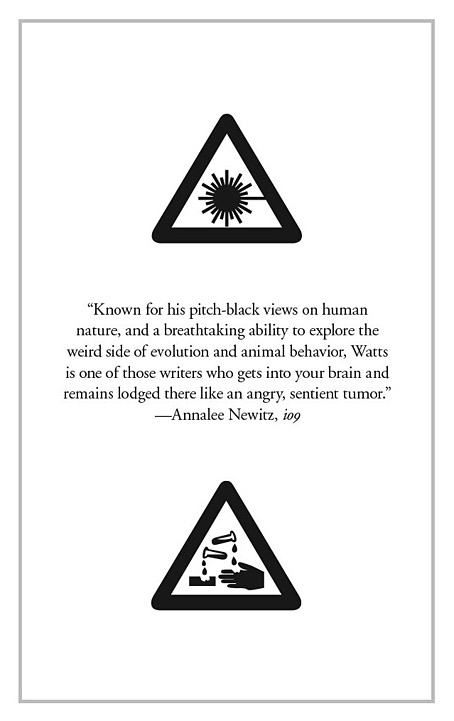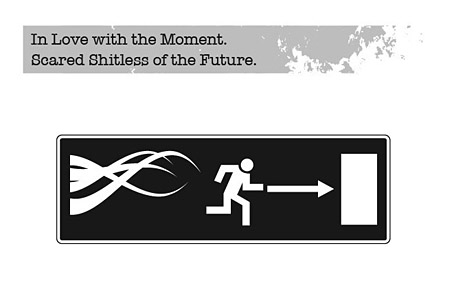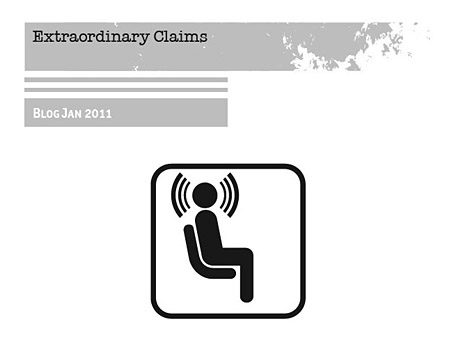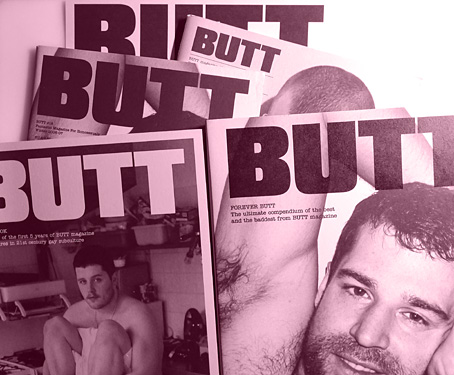
What I discovered is that BUTT actually matters, and I’ll tell you why. BUTT fills a hole, as tautologous as that may sound. I’m tempted to say that BUTT fills the vacuum left by the sad and lamented loss of such historically important magazines as the original Andy Warhol’s Interview, After Dark and the first five years of index (under the editorship of Bob Nickas), but since none of those magazines were explicitly and overtly, capital G gay, I guess it’s more accurate to say that BUTT has single-handedly pioneered the notion of a smart, literate and fashionable, conversational gay magazine that isn’t interested in propping up some ideologically proper or even terribly consistent image of what it means to be a homosexual, and that also manages to be dirty. —Bruce LaBruce
BUTT magazine—variously subtitled “Amazing (or Fantastic, or Hysterical) Magazine for Homosexuals”, “The Homosexualist Quarterly”, “International Fagazine”, etc, etc—ceased publication in 2012, but the best of its run is preserved in two book collections from Taschen: BUTT Book (2006), a paperback which seems now to be out of print, and Forever BUTT (2014), a hardback contained within leatherette boards. I was re-reading some of the interviews in the books recently, and feeling the loss of a gay magazine that was easily the best of its kind in the 2000s, a welcome alternative to contemporaries that were little more than glossy aspiration fodder, filled with fashion shoots and anodyne celebrity interviews.
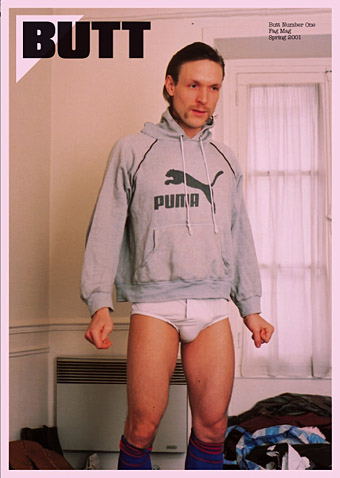
Issue 1: Bernhard Willhelm by Wolfgang Tillmans.
BUTT wasn’t as thoroughly sex-obsessed as Boyd McDonald’s Straight to Hell but publishers/editors Gert Jonkers and Jop van Bennekom shared McDonald’s determination to reflect the lives of gay men as they were lived, with an equivalence given to complete unknowns (often the magazine’s own readers) as well as to successful writers, musicians and film directors. Interviews with the latter predominately concerned the subjects’ sex lives and interests, they were never promo pieces for current work. BUTT was the only magazine in the world where you might find interviewees such as Gore Vidal and Edmund White rubbing shoulders with a man like Dirty Danny (“the filthiest homosexual on earth”) or a gay refuse collector. I also loved the design which from the first issue used pink paper stock and only two typefaces for the entire run: Compacta for headlines, and different weights of American Typewriter for everything else. The minimal look established a distinct identity that inspired imitation among later titles such as Kaiserin (“A magazine for boys with problems”).
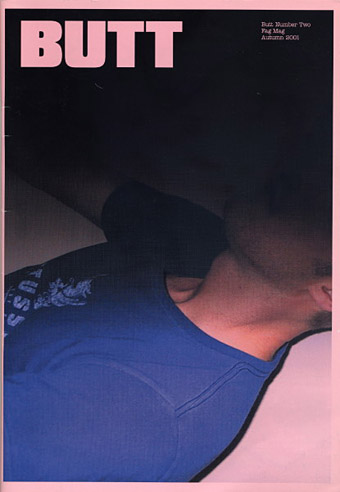
Issue 2: Lernert in Stüssy by Jop van Bennekom.
BUTT ran for 29 issues in all, stopping short of the 30-issue barrier which smaller magazines often struggle to pass. I’m always torn in cases like this, wishing there might have been more while also being aware that magazines can outlive their initial promise if they run for too long. BUTT certainly maintained its integrity, and we have the books, of course, which is more than many other titles manage. Back issues may be found for sale online but they’re increasingly expensive, a disappointment for would-be collectors but also a sign of the magazine’s cult value. I just wish I’d bought more of them as they appeared.
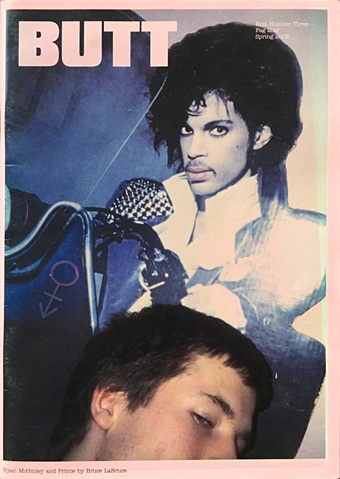
Issue 3: Ryan McGinley and Prince by Bruce LaBruce.
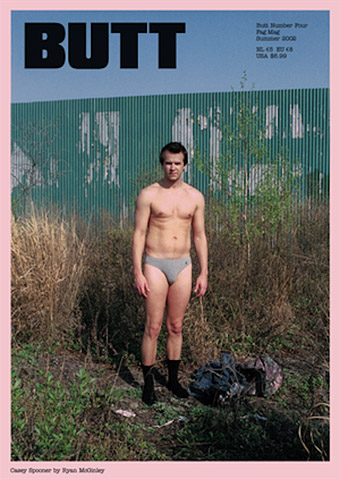
Issue 4: Casey Spooner by Ryan McGinley.
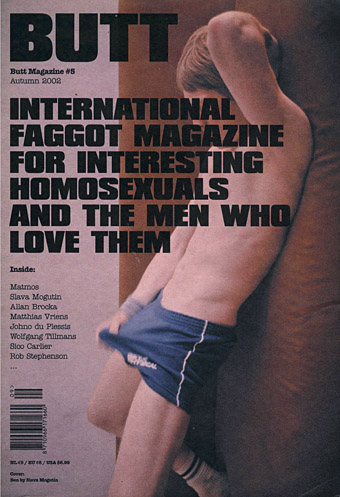
Issue 5: Ben by Slava Mogutin.

